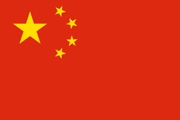Donate to Support Supercluster
Your support makes the Astronaut Database and Launch Tracker possible, and keeps all Supercluster content free.
SUPPORTSupercluster on Patreon
Your support makes the Astronaut Database and Launch Tracker possible, and keeps all Supercluster content free.
SUPPORT
























This goes
to space
Shenzhou
This is China’s first and current human spacecraft.
Based heavily on Russia’s Soyuz, Shenzhou uses Soyuz parts for its life support and docking systems.
The spacecraft can carry three taikonauts to low Earth orbit and to Chinese space stations.
Specs
Launch mass: 8,100 kg (17,900 lb)
Dimensions: 9.25 m x 2.8 m (30.3 ft x 9.2 ft)
Volume: Total: 14.8 m3 (520 cu ft) Habitable: 7 m3 (250 cu ft)
Shenzhou made China the third and most recent country, behind the Soviet Union/Russia and the United States, to build a spacecraft that can launch and land its own crew.
Its first flight, an uncrewed test, took place on November 19th, 1999. The first crewed flight was Shenzhou 5 which carried one taikonaut to space on October 15th, 2003.
The spacecraft has three main parts: the Orbital, Reentry, and Service modules.
The reentry module carries the crew for launch and landing and is the central part of Shenzhou. The reentry module is the only part built to survive reentry.
Shenzhou will eventually be replaced with China’s next generation of crew spacecraft currently being built and tested.
Asteroid 8256 Shenzhou and the U.S.S. Shenzhou in Star Trek: Discovery are both named for the spacecraft.
Photo credit: China National Space Administration/Supercluster

On this
rocket
Long March 2F
The Chang Zheng 2F is China’s first rocket built to carry humans.
Its nickname, Shenjian, means “Divine Arrow.”
The rocket is a heavily modified version of the Chang Zheng 2E. China added redundant systems to help improve safety and changed parts of the rocket to be able to fly with a launch escape system.
At liftoff, the first stage is helped by four boosters bolted to its side. A second stage then places Shenzhou into a low Earth orbit.
It uses two highly toxic propellants, nitrogen tetroxide and unsymmetrical dimethylhydrazine.
The rocket will eventually be replaced by the now-flying Chang Zheng 7 rocket, which uses non-toxic propellant and launches over the open ocean.
Chang Zheng 2F has never suffered a launch failure.
Specs
Height: 62 m (203 ft)
Diameter: 3.35 m (11.0 ft)
Mass: 464,000 kg (1,023,000 lb)
Stages: 2

From this
launch site
SLS-1, Jiuquan Satellite Launch Center, People's Republic of China
South Launch Site 1 (SLS-1) is located within Launch Area 4 at the Jiuquan Satellite Launch Center.
The pad is only used to launch the Chang Zheng 2F rocket and is the only place in China that can launch humans to space.
The rocket is stacked and prepared for launch in a large, vertical building nearby before being rolled out to the launch pad.
Jiuquan Satellite Launch Center
Also called the Shuangchengzi Missile Test Center, Jiuquan was the first of China’s four space centers.
Located in the desert, the area was first chosen in 1958 for its remote location and military nature.
This means that rockets launched from Jiuquan must fly over land and populated areas on their way to space.
Jiuquan was the site of China’s first satellite launch in 1970 and China’s first private orbital launch in July 2019.

And docks
here
Tiangong Space Station
This is the Tiangong Space Station, China's large, in-space construction project that will take two years to complete.
The station will have three modules for a crew of three to live and work and will have three sets of solar arrays for power.
It will be one-fifth the size of the International Space Station when complete and about the same size as the former Mir space station.
Construction began with the launch of the Tianhe module on April 29th, 2021.
A second module, Wentian, is planned to launch in July 2022, followed by the Mengtian module in October 2022.
Tiangong is in a 41-degree orbit, meaning it travels as far North as 41 degrees and as far South as 41 degrees latitude when seen from the ground.
It is designed to operate for at least 10 years.
Picture: China Manned Space Engineering Office

GET THE SUPERCLUSTER APP
THE SUPERCLUSTER PODCAST
A podcast exploring the amazing milestones that changed space history, the wildest ideas that drive our future, and every development in this new Golden Age of Space.
Donate to support
Your support makes the Astronaut Database and Launch Tracker possible, and keeps all Supercluster content free.
SupportCOPYRIGHT 2021 SUPERCLUSTER LLC

